Documentation and Enquiries Officer, Chiara Fiaccavento has been working with a team of other experts on clearing and cataloguing thousands of our collection items. Here she reveals a few of her favourites…
For the last nine months I’ve been working on the decant of two storerooms and one gallery, creating space for the development of a new Special Exhibitions Gallery at the Science and Industry Museum. All the objects that were stored in these spaces will join other collections from the Science Museum Group at the National Collections Centre in Wroughton (near Swindon). Our team had about 7,700 objects to hazard check, inventory, barcode (yes, that’s right, every item can now be scanned into our collections management system), photograph and pack.
If that sounds like a lot, it is! A museum decant is a great deal of work, and all carried out in near secret behind the scenes of public museum life. But it does mean that I get to see objects that aren’t on display and there can be some really amazing finds. These are just a few of my personal favourites:
“Ticka” detective camera
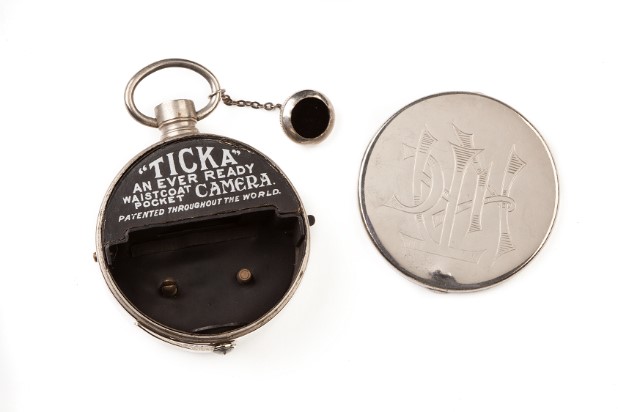
Talking of secret operations let me introduce my favourite object: a “Ticka” detective camera. “Ticka” means “tick” in Swedish, because this miniature spy device, patented in Sweden in 1904 by the designer Magnus Niéll, was made to resemble an old-fashioned pocket watch. It measures just 26 x 60 mm, only slightly bigger than a normal waistcoat pocket watch of the time.
The camera was produced in Britain from 1906 by the photographic manufacturer Houghton Ltd. These tiny cameras proved extremely popular, selling around of 10,000 in the first three months of production, including one to Queen Alexandra. Together with other portable camera types of the same period it started a trend for pocket-sized folding cameras, best represented by Vest Pocket Kodak (or PVK) camera of 1912, made by Eastman Kodak, also present in our decant spaces.
The next two objects are highly specialised scientific devices that also happen to be aesthetically appealing – which, to be honest, was what caught my eye at first.
Crookes Tube
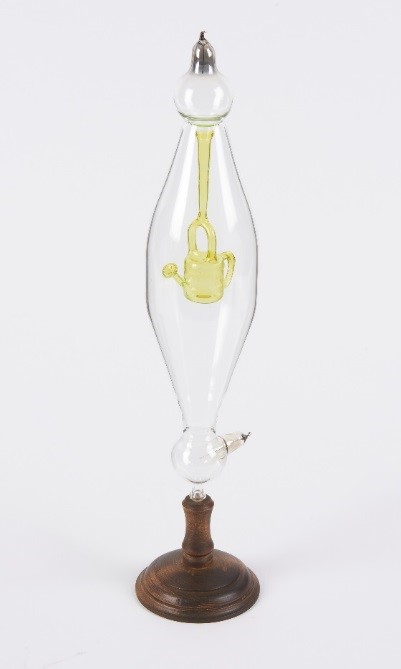
This is an electrical discharge tube, invented by English physicist William Crookes, and his research group in c. 1875, and named Crookes tube after him. It led to the discovery of streams of electrons, also called cathode rays. When two electrodes are placed at the extremities of the tube and a high-voltage stream is applied, the watering-can in the middle lights up (please physicists forgive me for this mediocre explanation of this very cute piece of scientific equipment).
Wimshurst machine
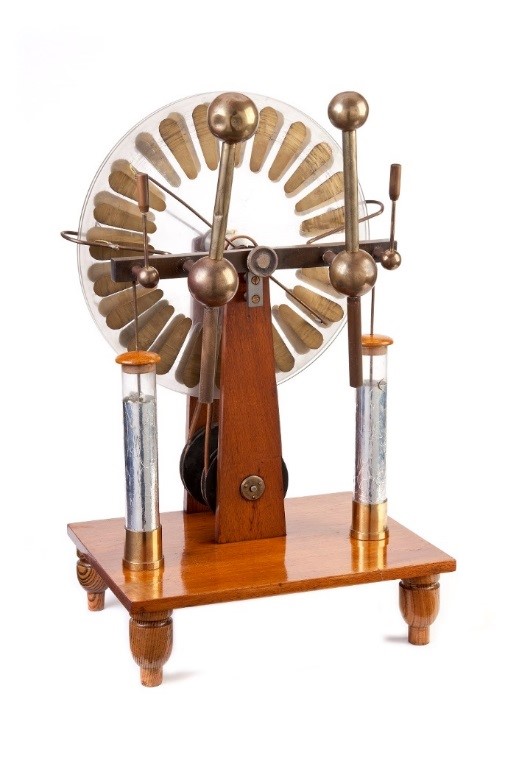
The second piece that’s looks really caught my eye is an electrostatic generator, known as Wimshurst machine. It was invented by British inventor James Wimshurst between 1880 and 1883, and made by William Satchell in Manchester, c. 1920. It produces a high voltage by building up a charge of static electricity and was used to demonstrate electrostatic induction. That charge then sparks between the two metal balls which must have been an extraordinary sight in the late 19th century.
If you love the Industrial Heritage of the North-West as much as we do, you will appreciate the next two objects that exemplify two fundamental industries of the region.
Stavert, Zigomala & Company Textile Mark
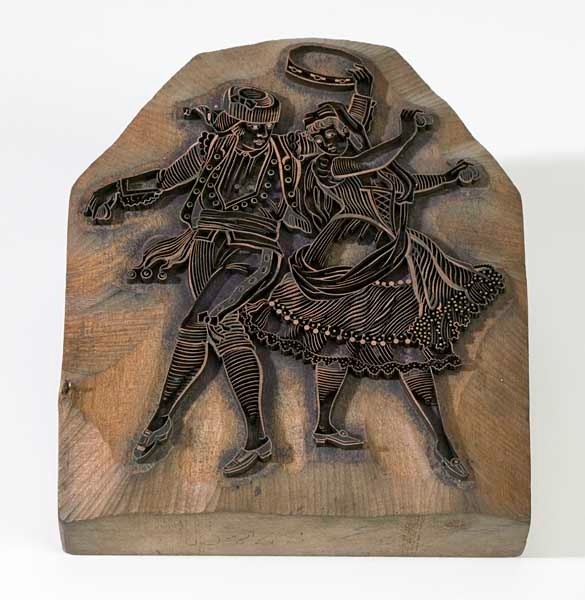
The first is a trademark printing block (Y2002.36.56) made by Stavert, Zigomala & Company, a Manchester-based textile company founded in about 1837, that traded in cotton and arranged the finishing of cloths before exporting around the world. As suggested by the traditional tango costumes of this dancing duo, the firm traded mainly in South and Central America, with offices in Buenos Aires, Argentina and La Havana, Cuba. British cottons produced in ‘Cottonopolis’, as Manchester was known then, were regarded as the finest available, and the company was legally required to mark its textile products with identifying marks. Our recently renovated Textiles gallery shows how cotton transformed Manchester into a metropolis, I would definitely recommend checking it out.
Davy Lamp

Second to the textile industry, what guaranteed the importance of the area during the Industrial Revolution was the richness of Lancashire Coalfield and the exploitation of its mineral resources. The workers’ conditions were really grim, with long working days trapped in dark, narrow tunnels with little air and high temperatures. Fundamental to the success of mining operations was the safety oil lamp, which included a wire gauze. It enclosed the flame and reduced the risk of explosions, an event sadly common in mines due to the presence of flammable gases known as ‘firedamp’. This model of safety lamp was developed in 1815 by British chemist and physicist Humphrey Davy. The ‘Davy Lamp’ was widely used during the 1800’s before being replaced by electric – and safer – lamps at the end of the century.
Alien Egg and Dalek


Sci-fi and horror fans will probably prefer to get away from reality and have a closer look at two threatening beauties from our Creative Industries collection. Both have been acquired from the company “Exquisite Corpse” in 1990 for an exhibition – “Out of this World” – that explored space Science Fiction TV. This Alien egg on the verge of hatching, originally used in the film “Alien” and this deadly Dalek may be a full-size replica but it still feels like its patiently waiting to exterminate us all if Doctor Who doesn’t intervene.
Photographic Exposure Computer
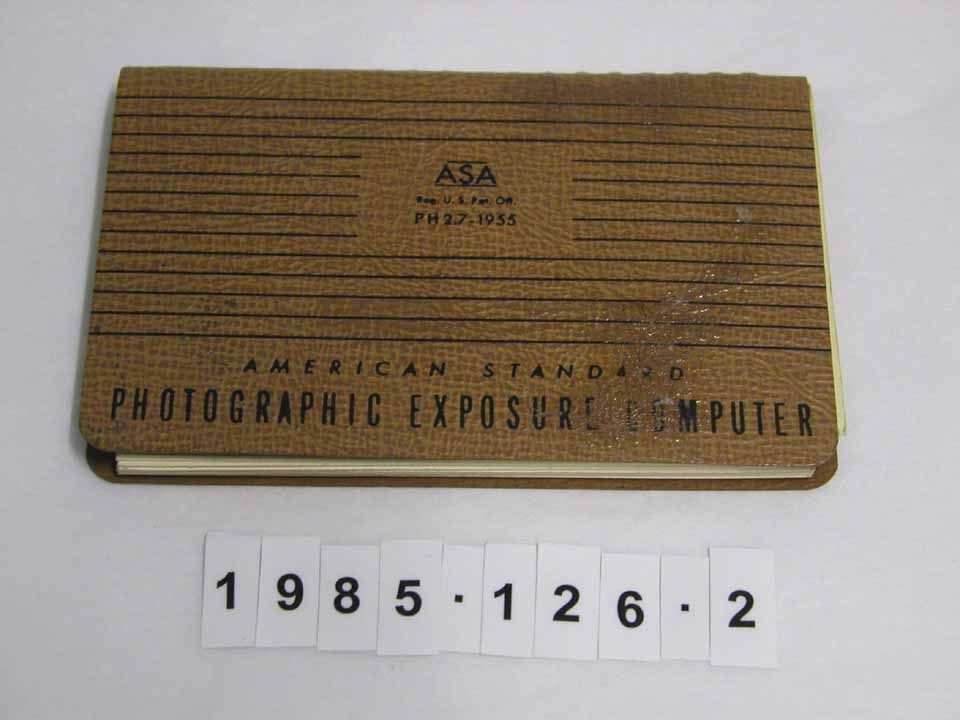
These are just a handful of the thousands of incredible objects I have encountered during this project: teeny-tiny microscopes, a giant lightbulb, artistically carved pipes, a 1950’s flowered telephone, BBC sound mixing desks, fridges and washing-machines, thermometers, spectacles of all ages, Boddingtons beer bottles and a still mostly full can! Name something and we probably have an example of it in our collections. Despite this however, our Curatorial Department is always on the lookout for interesting and unique objects with a strong connection with the scientific and industrial heritage of the North-West to enrich our collections, share and preserve for future generations so keep your eyes open for anything hiding in your attic. And yes, in case you were wondering, we have plenty of them too…

If you have something you think our Collections team would be interested in email: collections@scienceandindustrymuseum.org.uk
Bel lavoro, molto interessante mia cara nipotina